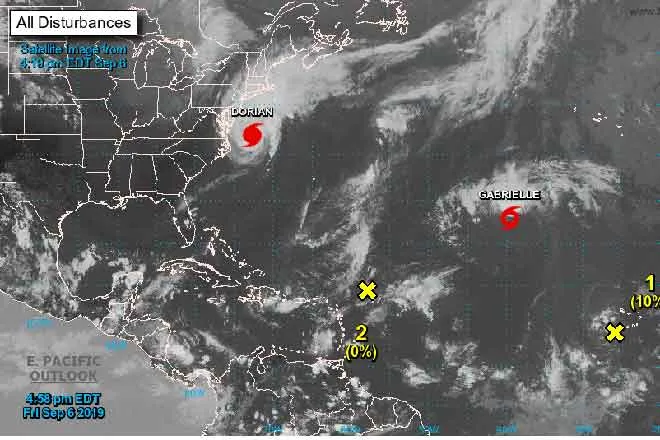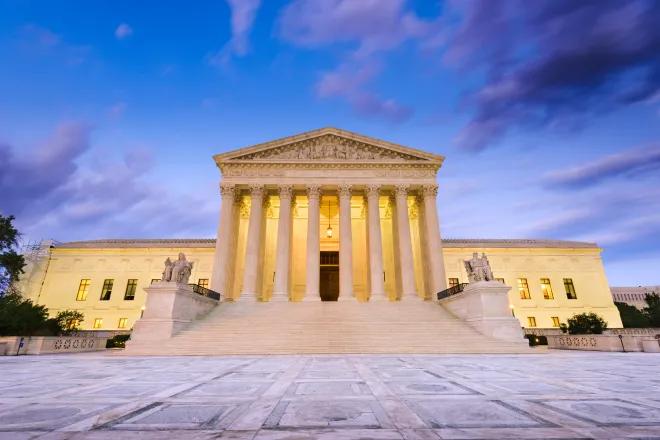
Most violent crime rates have fallen back to pre-pandemic levels, new report shows
© Daniel Tamas Mehes - iStock-1992275198
This story originally appeared in Stateline.
The number of homicides across the United States declined by 16 percent in 2024, continuing a recent downward trajectory, according to the latest crime trends report from the Council on Criminal Justice, a nonpartisan think tank.
Homicides spiked during the early years of the COVID-19 pandemic, and crime became a central focus of President Donald Trump’s 2024 reelection campaign. Trump insisted that FBI crime data showing declines was “fake” and claimed that crime was “through the roof.” The second Trump administration is expected to adopt a tough-on-crime approach.

© Akarawut Lohacharoenvanich - iStock-1436012592
State legislatures nationwide also are expected to prioritize a variety of criminal justice measures this year, including prison oversight, illegal immigration, retail theft and policing standards and procedures. Polls show most Americans see crime as a significant problem, though fewer than in recent years.
The Council on Criminal Justice, known as CCJ, gathers data from individual law enforcement agencies for its biannual crime trends reports, meaning the data is more recent than the FBI’s annual report. Both the think tank’s and the FBI’s reports, however, show a similar turnaround in violent crime.
In 2023, criminal homicide — which the FBI defines as murder or non-negligent manslaughter — was down by 11.6 percent from the previous year. It was the largest single-year decline in two decades, according to the FBI’s annual crime reportpublished last year.
The CCJ report shows that the downward trend appears to be continuing, with homicides in 2024 dropping by 16 percent compared with 2023. That drop equates to 631 fewer homicides in the 29 cities that provided data for the category, according to the council’s report.
If this decrease holds as more jurisdictions report their data to the FBI later this year, 2024 would rank among the largest single-year homicide drops since at least 1960, the start of modern record-keeping, according to the report.
A political issue
Despite the recent decline in homicides, crime remains a politically salient issue. A majority of Americans — 56 percent — believe that national crime has increased or consider it an “extremely” or “very” serious problem. But public concern about crime has lessened over the past year, according to Gallup’s annual crime survey.

© fitimi - iStock-528483210
Perceptions of crime are heavily influenced by political affiliation. The survey found that 60 percent of Democrats believe crime has decreased over the past year, whereas 90 percent of Republicans think it has increased.
Some crime experts say that media reports, political messaging and viral social media posts may exaggerate Americans’ worries about disorder, making crimes such as shoplifting and public drug use appear more prevalent than they actually are. Still, some individual cities and neighborhoods may be experiencing higher crime rates, which could further explain these concerns.
“We still have problems with crime, still have problems in the criminal justice system, and even though the crime rates are improving, we should not take our focus off crime and criminal justice,” said Ernesto Lopez, the report’s co-author and a senior research specialist with the council, in an interview with Stateline.
The council analyzed crime trends in 40 U.S. cities, although not all cities had data available for every type of offense.
Among the cities studied, 22 saw a decline in homicides last year, with Chandler, Arizona, and Little Rock, Arkansas, recording the largest decreases at 50 percent and 43 percent, respectively. Six cities experienced increases, with Colorado Springs, Colorado, leading the way with a 56 percent jump.
Even though the crime rates are improving, we should not take our focus off crime and criminal justice.
– Ernesto Lopez, senior research specialist with the Council on Criminal Justice
When comparing homicide rates between 2019 and 2024, the council’s study sample saw a 6 percent decline, largely driven by cities with traditionally high homicide rates, including Baltimore and St. Louis.
Homicides are still above pre-pandemic levels in some cities, including New York City and Washington, D.C. In New York City, for example, there were 382 homicides in 2024 compared with 319 in 2019. In Washington, D.C., there were 187 homicides in 2024 and 166 in 2019.
Other crimes
The CCJ report also examined trends in other violent and property crimes, including gun assault, carjacking, motor vehicle theft and drug offenses. Most of these offenses were lower in 2024 than in 2023, with shoplifting being the only exception, showing a 14 percent increase. Shoplifting also was 1 percent higher in 2024 compared with 2019.

iStock
Researchers were surprised that shoplifting rates increased last year despite retailers taking more measures to combat it, such as locking up merchandise behind glass. Some experts say that the rise may reflect improved reporting efforts rather than an actual spike in theft.
Last year, state legislatures placed a strong emphasis on tackling retail theft, and this momentum is likely to continue into this year, with Maryland lawmakers already considering a bill aimed at addressing large-scale organized retail theft.
From 2023 to 2024, incidents of robbery dropped by 10 percent, carjackings fell by 32 percent, and motor vehicle theft decreased by 24 percent.
Violent crimes such as sexual assault, domestic violence and robbery are now below pre-pandemic levels, but aggravated assaults, gun assaults and carjackings remain higher than in 2019, according to the report.
Property crime trends over the past five years varied. Residential burglaries and larcenies decreased, while nonresidential burglaries increased. Motor vehicle thefts rose by 53 percent, and drug offenses fell by 28 percent.
Stateline is part of States Newsroom, a nonprofit news network supported by grants and a coalition of donors as a 501c(3) public charity. Stateline maintains editorial independence. Contact Editor Scott S. Greenberger for questions: info@stateline.org.
Colorado Newsline is part of States Newsroom, a nonprofit news network supported by grants and a coalition of donors as a 501c(3) public charity. Colorado Newsline maintains editorial independence. Contact Editor Quentin Young for questions: info@coloradonewsline.com.
















